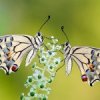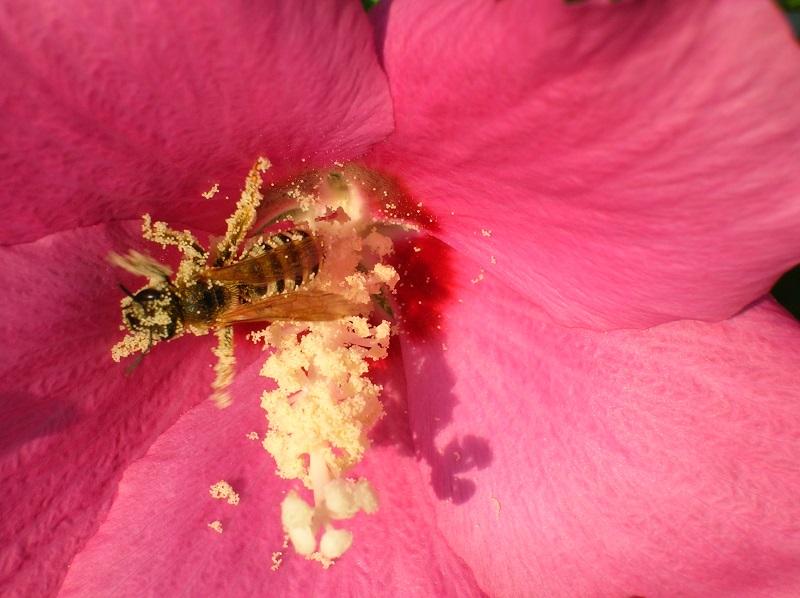elena_11293
Master Florello
Quelle metalliche sembrano un po' mimetizzarsi
a occhio non l'avevo notato perché spiccavano molto, ma così ingrandita è vero, sembrano mimetizzarsi con la trama... chissà, magari per gli insetti il risultato è perfino più evidente e quindi sono al sicuro dai predatori
Oggi purtroppo al ritorno dal lavoro ho trovato l'elastico che teneva la zanzariera di una delle due scatole rotto mentre l'altra che avevo chiuso con un filo di rafia era un po' allentato... fatto sta che da questa è scappato un bruco(((( Forse è passato qualche merlo che ha sbatacchiato le retine.
peccato
ma secondo te io vivo con le blatte Dubia in giro per casa?


dovrebbe essere un codirosso spazzacamino, Phoenicurus ochruros, femmina o giovane
grazie! chissà perché la prima volta non avevo notato la coda rossastra....
3 crisalidi distanziati di un giorno... il primo dovrebbe liberarsi dal 27 maggio in poi, dato che dovrei essere in ferie, ma per poco, adesso cerco cosa potrei lasciargli in casa da succhiare per sopravvivere.
puoi leggere qualcosa di veloce qui da un paio di articoli diversi:
Feeding your butterflies
Some species of butterflies do not eat at all. Only the caterpillars eat, while the butterflies itself have no mouth! These species are common in captivity, because they are easy to keep.
Species that do feed as adults, need nectar or a sugary solution to drink from. Nectar can be given by offering fresh flowers of the species that the butterfly visits in nature. It is easier to supply a sugary solution to feed your butterfly. You can dissolve sugar or honey in water in dilution of 7 parts water and 1 part sugar. Mix this solution well and refresh it every day. You can offer the sugary solution in a cup that is covered in mosquito netting. The solution should reach to about 0,5 to 1 cm of the netting to make sure the butterflies can reach the sugary solution with their tongue.
What Do Butterflies Eat and Drink
Actually, butterflies do not eat at all. Well, at least not in the traditional sense. What do butterflies eat? Instead of eating, butterflies get their nurishment from drinking. They have a long narrow tube in their mouth called a proboscis that acts as a straw. They usually set on top of a flower and drink the nectar. To see a congregation of many kinds of butterflies together they feed on small puddles on the grouind or wet areas on leaves and plants. See the section below if you are interested in what Caterpillars eat.
Did You Know?
Butterflies can taste with their feet. They have six lets and they each have sensors on them that can tell just by landing on a flower what it taste like.
Butterfly food
Butterflies can eat anything that can dissolve in water. They mostly feed on nectar from flowers but also eat tree sap, dung, pollen, or rotting fruit. They are attracted to sodium found in salt and sweat. This is why they sometimes even land on people in Butterfly Parks. Sodium as well as many other minerals is vital for the butterflies reproduction.
e poi tutta questa pagina, che spiega quali frutti usare => Fruit for the Butterflies
non riesco a tradurre tutto ora, usa google translate, l'essenziale dovrebbe risultare comprensibile e se si serve chiarire qualche dubbio su parole/frasi che risultano difficili chiedi pure => https://translate.google.com/
ps: non so se l'avevi scritto, non ricordo di averlo letto.. son curiosa, dove hai preso le larvette?
.
qualcuno sa di che pianta si tratta in questo gran bello scatto (copy PDR PHOTO - Nature Photography) ? (sennò posterò in sezione identificazioni) la trovo carina e dato che piace loro....
 (la potete vedere ingrandita qui => Macaone (Papilio machaon) | PDR Photo)
(la potete vedere ingrandita qui => Macaone (Papilio machaon) | PDR Photo)













